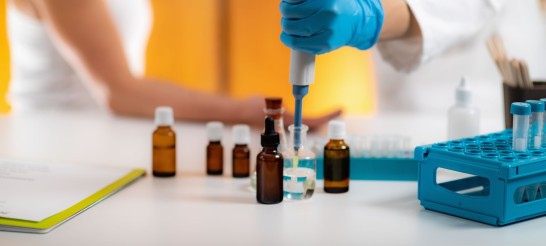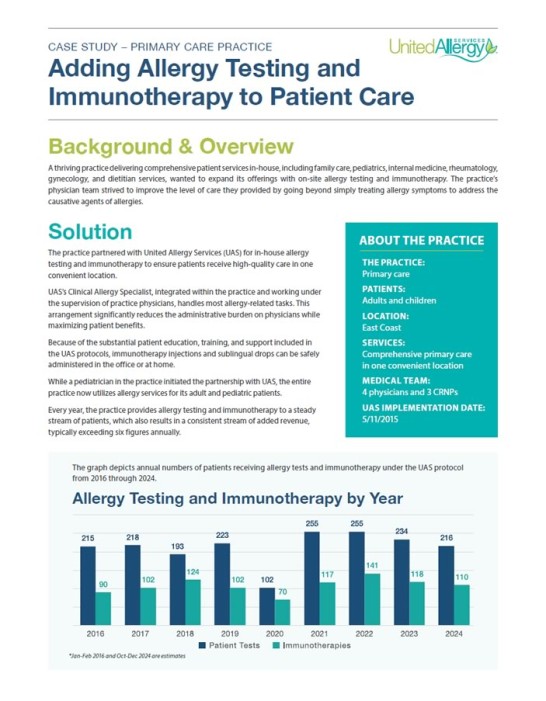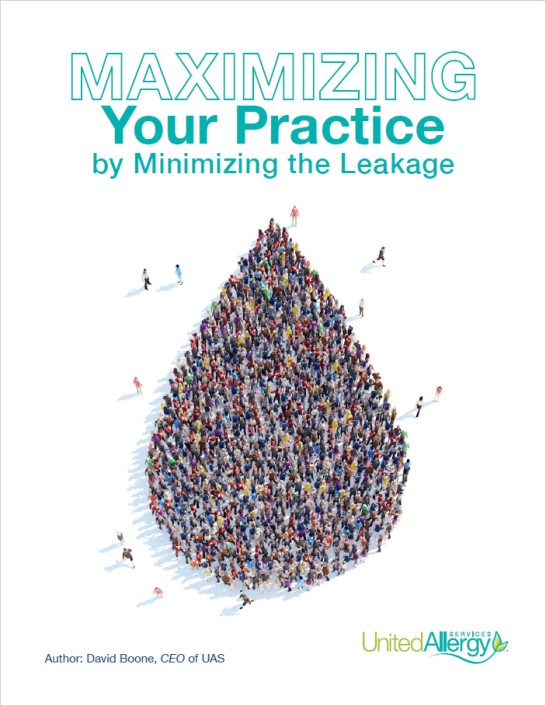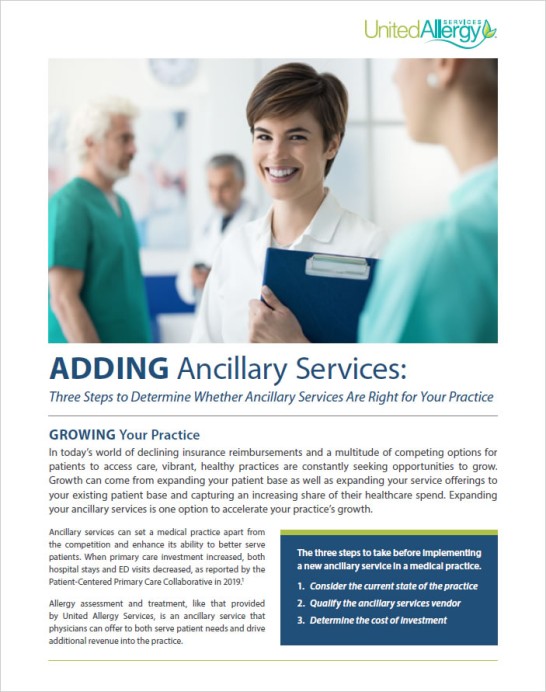Allergy Services for Primary Care Physicians: Expanding Access to Long-Term Allergy Relief
Allergies affect more than 100 million people each year. Yet despite their widespread impact, allergies often go untreated due to the scarcity of specialist care. That’s why United Allergy Services is focused on introducing allergy treatment and immunotherapy to primary care practices—the first and often only point of contact for patients suffering from allergies. Let’s look at how UAS is making allergy care part of primary care.
Allergies are among the most common chronic conditions in the United States. Yet, despite the prevalence of food and environmental allergies and the associated health complications—including allergic asthma, sinus infections, and even anaphylaxis—many patients never receive proper diagnosis or treatment. Instead, they rely on over-the-counter medications that only mask symptoms rather than addressing the root cause.
Allergy Care Is Primary Care
Primary care physicians (PCPs) are often the first and only point of contact for patients suffering from allergies. By incorporating allergy testing and immunotherapy into their practice, PCPs can offer their patients a comprehensive, long-term solution, without the need for frequent specialist referrals. Allergy immunotherapy is the only treatment proven to modify the immune response to allergens, providing lasting relief rather than temporary symptom control.
United Allergy Services: Bringing Allergy Testing & Treatment to PCPs
United Allergy Services (UAS) partners with primary care providers to offer in-office allergy testing and customized immunotherapy treatment, enabling them to expand their scope of care with minimal additional workload. Since 2009, UAS has successfully partnered with over 2,500 practitioners across more than 20 states.
How UAS Supports PCP Practices
UAS offers two models for PCPs: a UAS-staffed Allergy Center or a self-managed Testing & Immunotherapy Kit package.
The UAS Allergy Center is fully supplied, staffed and managed by UAS. It is designed to integrate seamlessly into the practice with minimal disruption or outlay. This program includes:
- Clinical Allergy Specialists (CAS): Trained, onsite professionals who educate patients, conduct allergy testing, and coordinate immunotherapy.
- Comprehensive Food and Environmental Allergy Testing: Identifies sensitivities to pollen, dust mites, mold, and pet dander as well as certain foods (e.g. peanuts, lactose).
- Custom Immunotherapy Plans: Based on proprietary protocols, personalized allergy treatment options include subcutaneous (allergy shots) and sublingual (allergy drops) to maximize patient convenience and adherence.
- Full-service Supply & Compliance Management: UAS handles all allergy center supplies, from test extracts to patient education materials, ensuring a seamless experience.
- Insurance & Billing Support: Our team assists with reimbursement processes, making allergy services accessible and affordable for both patients and practices.
With the UAS Testing & Immunotherapy Kits, practices can enhance patient care while maintaining flexibility in how allergy services are incorporated. The Kit option includes:
- Environmental Allergy Testing Kit: Screens for 54 regionally relevant allergens, including trees, grasses, weeds, molds, and pet dander.
- Food Allergy Testing Kit: Identifies sensitivities to 23 common food allergens with panels tailored for adult and pediatric patients.
Both kits include personalized subcutaneous or sublingual immunotherapy options through UAS’s prescription-based formulations.
The Value of Experience
United Allergy Services has an unequalled record of success in delivering effective allergy treatment:
- UAS has more patients on our protocol than any other allergy service provider in the United States.
- We have partnered with more than 2,500 providers in 20+ states to provide allergy testing and immunotherapy services.
- Since 2011, UAS has conducted over 575,000 allergy and food sensitivity tests and served over 350,000 patients with 36+ million immunotherapy treatments in our allergy care clinics.
Enhancing Allergy Care in Primary Practices
With limited access to allergy specialists, many allergy sufferers and their doctors are forced to rely on medications that only mask allergy symptoms, increasing the risk of patients developing long-term respiratory conditions such as asthma.
By partnering with United Allergy Services, primary care practices are able to provide convenient, in-office testing for the full range of allergies and food sensitivities along with safe, well-proven immunotherapy.
Patients enjoy dramatic improvements in quality of life while PCP practices achieve higher levels of patient care and overall satisfaction.
United Allergy Services Featured in Fujitsu Case Study
We are happy to share that United Allergy Services was recently featured in a Fujitsu case study highlighting how we achieve precise inventory tracking and process automation to enhance patient safety and efficiency. The case study explores how UAS leverages Fujitsu’s GLOVIA® OM solution, in conjunction with Salesforce, to improve the allergy care services we offer through our provider partners.
How UAS Improved Efficiency and Operational Care with GLOVIA® OM
As a leading provider of allergy testing and immunotherapy solutions such as allergy shots and allergy drops, UAS partners with healthcare providers to deliver effective and personalized allergy care. Managing thousands of patient interactions daily requires a robust and scalable system that ensures accuracy, compliance, and efficiency.
To help address these needs, UAS implemented GLOVIA® OM, a solution from Fujitsu designed to optimize data management and logistics. This system has improved the way we manage and track inventory, and helps ensure patient safety and regulatory compliance, leading to:
- Improved operational efficiency and patient care
- Optimized patient safety with precise inventory tracking
- Automated reorder process allowing clinics to focus on patient care
Mary Ellen Ault, Senior Director of Technology Services at UAS, stated, “We needed a very detailed and robust data structure to manage the tracking of antigens and extracts used in allergy tests and treatments. The inventory management piece of it is extremely important for us because we track down to the lot detail.”
A Partnership Driving Better Healthcare Outcomes
Leveraging Fujitsu’s GLOVIA® OM solution underscores our commitment to utilizing advanced technology to deliver high-quality ancillary medical services while ensuring seamless provider workflows. This technology has helped us scale our services efficiently, empowering our partner providers to focus on what matters most—delivering the best possible care to allergy sufferers.
We invite you to read the full case study to learn more about how UAS is utilizing cutting edge technology to revolutionize allergy testing and immunotherapy treatment.
Allergy Testing Kits & Immunotherapy from UAS: A Flexible Solution
Adding allergy care allows healthcare providers to address a common patient need and create a new income stream within the existing framework of their practice. However, we know that every medical practice has different requirements. For practitioners looking to integrate allergy testing and treatment without committing to a fully staffed and supplied UAS allergy center, we offer a flexible alternative: allergy testing kits and immunotherapy.
Expanding patient services with ancillary offerings such as allergy testing and immunotherapy is an effective way for medical practices to counter the stiff financial headwinds many are facing. Adding allergy care allows providers to address a common patient need, improve satisfaction, and create a new income stream, all within the existing framework of their practice.
However, every practice operates differently, with unique workflows, staffing models, and space considerations. For providers looking to integrate allergy testing and treatment without committing to a fully staffed and supplied UAS allergy center, we offer a flexible alternative. UAS Allergy Testing Kits & Immunotherapy enables practices to incorporate in-house allergy care while maintaining operational efficiency and clinical control.
Allergy Testing Kits Designed for Clinical Flexibility
UAS offers comprehensive allergy test kits for both environmental and food allergy testing, equipping providers with everything needed to administer skin prick allergy tests in-office. Each allergy testing kit includes test materials, patient education resources, and virtual training to ensure staff readiness. Ongoing customer support is available for clinical guidance, operational questions, and prescription fulfillment.
- Environmental Allergy Testing Kit: Screens for 54 regionally relevant allergens, including trees, grasses, weeds, molds, and pet dander.
- Food Allergy Testing Kit: Identifies sensitivities to 23 common food allergens with panels tailored for adult and pediatric patients.
Comprehensive Immunotherapy Options
Practices offering allergy treatment can provide personalized immunotherapy through UAS’s prescription-based formulations:
- Subcutaneous Immunotherapy (SCIT): Allergy shots available in single or dual-vial sets for long-term symptom relief.
- Sublingual Immunotherapy (SLIT): Allergy Allay Drops® offer a convenient, at-home alternative to injections.
A Scalable Approach to Allergy Care
With the UAS Allergy Testing Kits & Immunotherapy, practices can expand their services in a way that aligns with their needs—whether through occasional in-office testing or a more structured allergy treatment program. This solution allows providers to enhance patient care and practice growth while maintaining flexibility in how allergy services are integrated.
For more information on how the UAS Allergy Testing Kits & Immunotherapy can fit into a practice, contact United Allergy Services.
Pediatrics: How Early Allergy Testing & Treatment Can Benefit Young Patients
Allergies are a common yet often overlooked concern in pediatric care, affecting millions of children across the U.S. While allergy symptoms like sneezing, itchy eyes, and congestion may seem minor, untreated allergies can lead to more serious conditions, including asthma, chronic sinus infections, and sleep disturbances.
Early allergy testing and treatment can significantly improve a child’s quality of life, preventing unnecessary discomfort and long-term health issues. United Allergy Services (UAS) partners with pediatricians to provide in-office allergy testing and immunotherapy, ensuring children receive timely and effective care.
For pediatricians, adding allergy testing and treatment services to their practice offers clinical benefits for young patients and provides a valuable opportunity to enhance their scope of care with ancillary medical services.
Common Pediatric Allergy Symptoms
Identifying allergies in children can be challenging since symptoms often mimic those of colds or respiratory infections. Parents and healthcare providers should be aware of key indicators such as:
- Persistent nasal congestion or sneezing
- Itchy, watery eyes
- Skin reactions, including eczema or hives
- Frequent ear infections or sinus infections
- Coughing, wheezing, or shortness of breath
- Sleep disturbances due to congestion or postnasal drip
Common Triggers
Children’s allergies often stem from seasonal allergens like pollen, as well as perennial allergens such as:
- Dust mites
- Pet dander
- Mold spores
- Certain foods (though UAS treats only environmental allergies)
As previously noted, without proper diagnosis and management, allergies can lead to more severe conditions, including asthma and chronic respiratory issues.

The Importance of Early Allergy Testing
Research shows that early allergy testing and treatment can prevent the progression of allergic rhinitis into asthma. According to the Preventive Allergy Treatment (PAT) study, 45% of untreated children developed asthma over 10 years, whereas only 25% of children who received allergen immunotherapy (AIT) developed asthma. Early identification allows for targeted intervention, helping children avoid unnecessary medications, frequent doctor visits, and reduced quality of life due to persistent symptoms.
How Pediatric Allergy Testing Works
United Allergy Services offers in-office skin prick testing, which is:
- Safe – Designed specifically for children, non-invasive, and physician-supervised
- Efficient – Identifies common environmental allergens within a single visit
- Accurate – Provides a clear picture of a child’s specific sensitivities, enabling a personalized treatment approach
Treatment Options & Benefits of Early Intervention
Once allergens are identified, families can choose from several treatment options:
1. Allergen Avoidance Strategies
- Reducing indoor allergen exposure (e.g., air purifiers, hypoallergenic bedding).
- Implementing seasonal precautions, like keeping windows closed during peak pollen times.
2. Medication Management
- Non-drowsy antihistamines, nasal sprays, and leukotriene inhibitors can help manage symptoms but do not address the root cause.
3. Immunotherapy
Unlike symptomatic relief medications, allergen immunotherapy (AIT) builds long-term tolerance by gradually desensitizing the immune system to allergens.
- Subcutaneous Immunotherapy (SCIT): Administered via injections under the provider’s supervision.
- Sublingual Immunotherapy (SLIT): Allergy drops placed under the tongue for at-home administration.
The Proven Benefits of AIT in Children
- Reduces symptoms of allergic rhinitis and asthma
- Decreases the likelihood of developing new allergies over time
- Lowers long-term healthcare costs by reducing medication dependence and emergency visits
- Prevents progression from allergic rhinitis to asthma
Studies have shown that pediatric patients who undergo immunotherapy experience lasting allergy symptom relief even years after stopping treatment.
Enhancing Pediatric Care with Allergy Services
Many children with allergy-related conditions visit pediatricians first. By integrating allergy testing and treatment, pediatricians can:
- Improve patient outcomes – Address allergies at their source rather than just treating symptoms
- Provide comprehensive care – Reduce the need for specialist referrals while managing allergies in-house
- Support long-term respiratory health – Prevent complications like asthma and chronic sinus issues
The United Allergy Services Advantage for Pediatricians
UAS provides a seamless, physician-supervised allergy program tailored for pediatric practices:
- Customized Immunotherapy: Personalized treatment plans based on each child’s allergy profile.
- In-Office Allergy Testing & Treatment: Delivered within the pediatrician’s practice, improving accessibility for families.
- Convenience for Families: Allows children to receive care from a trusted provider in a familiar setting, with at-home immunotherapy options available.
- Proven Safety & Efficacy: UAS analyzed the systemic reaction rate of 15,000 pediatric patients, six to 17 years of age, using the physician-approved proprietary UAS immunotherapy protocol. Out of that population, a total of 10 patients experienced systemic reactions, all of which were very mild (grades 1 to 2). This represents a reaction rate of 0.06% in pediatric patients. (Reported literature of systemic reactions by allergists is between 3-7% for all age groups.)
Adding UAS allergy services helps pediatricians expand their practice offerings while ensuring high-quality, evidence-based allergy care.
Conclusion
Allergies are more than just a seasonal nuisance. They can impact a child’s health, development, and overall well-being. Early allergy testing and immunotherapy can significantly reduce symptoms, prevent the progression of allergic diseases, and improve long-term outcomes.
For parents, now is the time to consider early allergy testing for children experiencing persistent allergy symptoms. For pediatricians, integrating UAS’ in-office allergy program is an effective way to enhance patient care, improve clinical outcomes, and provide families with accessible, long-term allergy solution.
The Primary Care Practice Crisis: It’s Time to Play Offense
In an article published in Medical Economics, Brad J. Scoggins, FO, DAAP contends that it’s not enough for medical practices to counter adverse market forces by cutting costs and streamlining operations. He argues that practices must take steps to generate more revenue—specifically by offering embedded services from an established specialist provider.
 The primary care practice crisis: It’s time to play offense. That’s the title of a timely article written by Brad J. Scoggins, FO, DAAP. His thesis: “When primary care practices are being strangled by market forces beyond their control, the fastest way to counter those forces is to quickly generate more revenue.“
The primary care practice crisis: It’s time to play offense. That’s the title of a timely article written by Brad J. Scoggins, FO, DAAP. His thesis: “When primary care practices are being strangled by market forces beyond their control, the fastest way to counter those forces is to quickly generate more revenue.“
Scoggins is one of United Allergy Services’ newest allergy partners, and he uses that experience as the proof of his argument that the fastest way to ramp up revenue is by “. . . offering embedded clinical services from an established specialist partner . . . that can be integrated into the practice’s clinical, operational and financial workflows.”
“It is hard to miss the headlines about the unprecedented challenges threatening family and internal medicine across the primary care spectrum,” Scoggins writes. “This traditional and essential gateway to health care in the United States is buckling due to:
- Crushing administrative burdens from payers
- Accelerating costs exacerbated by inflationary pressures
- Anemic reimbursement rates that don’t keep pace with the first two threats
- Corporate competitors like Amazon and CVS blurring the primary care sector for patients
Scoggins acknowledges that “playing defense” against such threats is essential and that most practices are doing everything they can to streamline workflows, leverage technology, manage costs, and negotiate the best possible contracts with payers.
However, these defensive tactics don’t address one of the biggest issues facing providers: patient leakage. According to Scoggins, “It is common for primary care practices to refer patients out for services that they don’t offer, along with the revenue those treatments represent. Patient leakage due to referrals . . . is a key cause of stress on independent and large group primary practices alike.”
The solution, he says, is to recapture those referrals. “Assuming a practice is effectively delivering all the routine core primary care treatments and services, it is time to expand into ancillary medical services and the additional revenues and other benefits they represent.”
As mentioned, Scoggins focuses on allergy testing and treatment “. . . as an opportunity for primary care practices to diversify services, meet growing patient demand, keep patients within the practice, and generate substantial new revenue.”
As Scoggins notes, “Primary practices that are offering ancillary allergy services to their patients are not only capturing a larger share of patient health care spend and alleviating reimbursement pressures, but on average a practice could consistently generate an additional $150,000 to $250,000 yearly (based on practice size and payer mix). Oftentimes, that revenue range is equivalent to what an additional physician could produce for the medical practice, but with a much smaller footprint and administrative cost.”
Ready to review the full article?
Case Study: Adding Allergy Testing and Immunotherapy to Patient Care
A thriving practice delivering comprehensive patient services in-house, including family care, pediatrics, internal medicine, rheumatology, gynecology, and dietitian services, wanted to expand its offerings with on-site allergy testing and immunotherapy. The practice’s physician team strived to improve the level of care they provided by going beyond simply treating allergy symptoms to address the causative agents of allergies.
Solution
The practice partnered with United Allergy Services (UAS) for in-house allergy testing and immunotherapy to ensure patients receive high-quality care in one convenient location.
UAS’s Clinical Allergy Specialist, integrated within the practice and working under the supervision of practice physicians, handles most allergy-related tasks. This arrangement significantly reduces the administrative burden on physicians while maximizing patient benefits.
Because of the substantial patient education, training, and support included in the UAS protocols, immunotherapy injections and sublingual drops can be safely administered in the office or at home.
While a pediatrician in the practice initiated the partnership with UAS, the entire practice now utilizes allergy services for its adult and pediatric patients.
Every year, the practice provides allergy testing and immunotherapy to a steady stream of patients, which also results in a consistent stream of added revenue, typically exceeding six figures annually.
About the Practice
THE PRACTICE: Primary care
PATIENTS: Adults and children
LOCATION: East Coast
SERVICES: Comprehensive primary care in one convenient location
MEDICAL TEAM: 4 physicians and 3 CRNPs
UAS IMPLEMENTATION DATE: May 11, 2015
A Win-Win
Prior to the partnership with UAS, practice physicians referred allergy patients to an outside specialist. Since adding allergy services in-house, the practice has seen:
- The growth of on-site allergy testing
- A reduction in the number of sick visits related to allergies
- Patients who feel more comfortable with testing and immunotherapy due to the convenience and comfort of it being provided in familiar surroundings
- Higher patient compliance with allergy treatment protocols
The practice’s patients now see allergy testing and immunotherapy as an integral part of the services they receive and report that it is more cost-effective than getting the same
care from a specialist. For the practice, offering allergy services helps keep patients within the office for coordinated care.
When asked why the practice chose to partner with UAS instead of providing a home-grown allergy service solution, the Director of Operations offered the following:
“UAS provides comprehensive support in deploying our allergy services. The team provides labor-intensive operation support, such as marketing, employee management, prior authorization, and screening processes. Most importantly, the UAS leadership team provides protocol compliance, quality assurance, and consultation support to ensure that every patient receives the greatest care possible.”
Patient Success Story
Here’s just one patient’s perspective on her experience with UAS after having received allergy injections since July 28, 2023:
“Prior to me taking allergy injections, I was constantly sick, catching colds, bronchitis, all kinds of upper
respiratory infections, and having asthma attacks. Being treated with steroids and antibiotics for the majority of
my life really made me tired.“Finally, at the age of 48, I got sick of being sick and just decided to try immunotherapy. I scheduled my
appointment with our lab, and that is where I met the amazing Clinical Allergy Specialist, Megan. She is a very
confident, knowledgeable, friendly and patient individual. She walked me through the process and made sure to
answer any and all questions or concerns.“Since I have been on allergy injections, my life has changed tremendously. I have not had any major colds or
anything. Even my doctor made a comment when I came in for my physical. She was surprised that she had not
seen me for any sick visits. Thanks to your amazing staff. They are truly making this process a great experience.”
Conclusion
Every practice stakeholder benefits from providing in-house allergy care as an ancillary service. Allergy testing and immunotherapy deliver an additional revenue stream, improve patient outcomes, and free up time for physicians to focus on other health issues due to the support that’s in place for their chronic allergy sufferers.
Patients appreciate the one-stop convenience while receiving high-quality services that help improve their lives. The integration of allergy services has enhanced patient satisfaction and strengthened the practice’s financial stability and potential for growth.
Maximizing Your Practice by Minimizing the Leakage
Does your medical practice have leaks? Is your growth hindered by “lost business” that negates the full impact of new patient growth? One of my favorite business expressions is from Roger Enrico, the former CEO of PepsiCo, who would say: “Growth is what matters.” It was one of the cornerstones that made PepsiCo the evolving company that it is and helped form the company’s distinguishing strategy.
Growth Comes in Many Forms
- Acquiring New Patients
- Raising Prices
- Capturing More of Your Existing Patients’ Healthcare Needs
Real growth comes from acquiring new patients and providing more services to your existing patients. Raising prices, which is not much of an option in today’s insurance reimbursement-dominated world, is often a fool’s errand and not real growth. It may create short-term revenue increases, but, at some point, the economics of supply and demand take over and patients leave for cheaper alternatives.
It is also said that if you are not growing, you are dying. In any business, growth is the pathway to sustainability for the company, its employees and customers. Many businesses have come and gone. Margins decline, investment in marketing and other customer-facing enticements disappear, and the business spirals downward. There are many examples of companies like this: Sears, Kodak, RCA, and Bed Bath and Beyond are just a few. They lost sight of their customers’ needs, and their customers fulfilled those needs elsewhere.
Your practice is a business with similar needs and challenges. There are technologies and services that entice your patients every day, including urgent care, telemedicine, allergy care, spa services, concierge services, and lifestyle services such as hormone replacement and weight loss, to name a few. As your patients seek these services, where will they go? As they are lured away to meet their needs, will they return to you? Will this begin a downward spiral for your practice?
Did you know that a leaky faucet that drips at the rate of one drip per second can waste more than 3,000 gallons per year? That’s the amount of water needed to take more than 180 showers! Small leaks are often ignored, but over time, the impact can be staggering.
Does your practice have leaks? Is your growth hindered by “lost business” that negates the full impact of new patient growth?
Take a Look at Allergy Care Services
A smart way to grow is to find ways to expand your offerings and keep your patients within your practice. What services do your patients need that you can offer? Allergy care can be an easy starting point. Over 50 million Americans suffer from allergies and asthma. These patients can be miserable and often self-medicate to treat symptoms without addressing the underlying cause. In today’s world of rapidfire patient visits with limited time to diagnose, treat and counsel, it is common to refer these patients out for care.
More recently, these patients are being lured by multiple telemedicine options offering easy access to care. Allergy care is a perfect example of a service many of your patients need that you can provide. Nearly one in three U.S. adults and more than one in four U.S. children reported having a seasonal allergy, eczema or food allergy in 2021, according to new data from the Centers for Disease Control and Prevention’s (CDC) National Center for Health Statistics. Almost 6% of U.S. adults and children have a food allergy, with Black, non-Hispanic adults and children the most likely to report this type of allergy.
50million+
Americans diagnosed with seasonal and environmental allergies
24million
Americans have seasonal allergic rhinitis
3.1million
missed work days per year
Seasonal & Environmental Allergies
Take a look at data revealed in two new reports from the National Health Interview Survey: “Diagnosed Allergic Conditions Among Adults, United States, 2021” and “Diagnosed Allergic Conditions Among Children Aged 0 – 17 Years: United States, 2021.”
Findings from Adult’s Report1
- ABOUT ONE QUARTER (25.7%) OF ADULTS have a seasonal allergy, 7.3% HAVE ECZEMA and 6.2% HAVE A FOOD ALLERGY
- WHITE, NON-HISPANIC ADULTS ARE MORE LIKELY TO HAVE A SEASONAL ALLERGY (28.4%) compared with Black non-Hispanic (24%), Hispanic (18.8%) and Asian non-Hispanic (17.0%) adults
- The percentage of adults with ECZEMA IS HIGHER AMONG WOMEN (8.9%) THAN AMONG MEN (5.7%)
- BLACK NON-HISPANIC ADULTS ARE MORE LIKELY TO HAVE A FOOD ALLERGY (8.5%) compared with Hispanic (4.4%), White non-Hispanic (6.2%), and Asian non-Hispanic (4.5%) adults
Highlights from Children’s Report1
- NEARLY 1 IN 5 CHILDREN (18.9%) HAVE A SEASONAL ALLERGY, 10.8% have eczema and 5.8% have a food allergy
- BOYS (20%) ARE MORE LIKELY TO HAVE A SEASONAL ALLERGY THAN GIRLS (17.7%)
- CHILDREN 6 – 11 YEARS ARE MOST LIKELY TO HAVE ECZEMA (12.1%), followed by children 0 – 5 years (10.4%) and children 12 – 17 years (9.8%)
- BLACK NON-HISPANIC CHILDREN ARE MORE LIKELY TO HAVE A FOOD ALLERGY (7.6%) compared with Hispanic (5%) and White non-Hispanic (5.3%) children
1 Prevalence and Severity of Food Allergies Among US Adults. JAMA Network Open 2019. The Public Health Impact of Parent-Reported Childhood Food Allergies in the United States. Pediatrics 2018. Food Allergy in the United States: Recent Trends and Costs – An Analysis of Private Claims Data. FARE Health White Paper, November 2017.
85%
of asthma patients have allergic rhinitis
50% more
likely to have allergies if one parent has allergies
75% more
likely to have allergies if two parents have allergies
Allergy Care Supports Patient Retention
Where are these patients getting the care that they need today? Rather than risk losing these patients, you can partner with ancillary service providers such as United Allergy Services to offer the highest quality allergy testing and immunotherapy treatments in your office. United Allergy Services brings expertise in areas such as leading immunotherapy protocols, inventory management, clinical support, best practice management, staff recruiting/hiring/training, revenue cycle and more—freeing you and your staff to focus on providing the best clinical care for your patients while generating additional revenue.
As you think about your growth plans for this year, don’t forget to focus on stemming the leakage. It’s there, and it’s real. Let United Allergy Services enhance your practice by helping you extend the care you provide your patients.
Learn more about how UAS can improve your practice and create a patient-centered medical home with comprehensive care.
Why Offer Allergy Treatment for Children?
For providers passionate about providing care to the pediatric population, integrating fundamental allergy care into their practice can bring about significant benefits. Allergy screening, testing, and treatment fosters healthier lives and also enhances the overall quality of care that can be provided.
Allergy immunotherapy, commonly known as allergy shots or allergy drops, is a therapeutic approach designed to modify the immune system’s response to allergens. While regularly considered for adults, recent increased adoption by pediatric providers has paved the way for immunotherapy’s integration into pediatric care, offering a transformative option for managing allergies.
Advantages
One of the primary advantages of incorporating allergy immunotherapy into pediatric care is the potential for long-term relief from allergy symptoms. When children are exposed to small, controlled amounts of the allergens that they are allergic to, their immune system gradually builds tolerance. This can result in reduced severity and frequency of symptoms, decreased allergic reactions, decreased asthma exacerbations, preventing the development of asthma, and less antibiotic and steroid use, as well as leading to a significant improvement in the overall quality of life for pediatric patients.
For many pediatric patients with allergies, the standard approach involves medications to manage symptoms as opposed to foundationally changing the state of the disease. Medication issues can include high cost, unwanted side effects, and only partial control of symptoms. Allergy immunotherapy, however, offers a natural alternative that aims to modify the body’s immune response, substantially reducing or eliminating symptoms, and potentially reducing or eliminating the need for long-term medication use.

Individualized Immunotherapy
Every child is unique, and so are their allergies. Allergy immunotherapy allows for individualized and targeted treatment plans tailored to each child’s specific allergens, lifestyle, and the family’s financial situation. This individualized approach maximizes the potential for efficacy as well as adherence. Also, offering allergy immunotherapy as a pediatric provider creates an opportunity to further strengthen partnerships with parents and caregivers.
Collaborating on a comprehensive treatment plan fosters trust and active involvement in the child’s healthcare journey. It positions pediatric providers as already trusted members of the child’s healthcare team serving as proactive partners in managing and alleviating allergic conditions. This further positions pediatric practices as leaders in proactive and preventive healthcare for children.
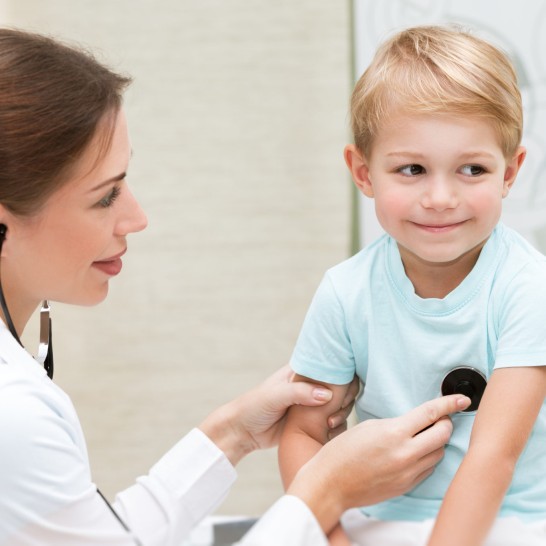
How Does UAS Partner with Providers?
How can healthcare providers balance the demands for more patient quality time and the financial requirements for a sustainable practice? Although it may seem counterintuitive to offer an additional service line, doing so can deliver higher revenue, additional clinical support, and meet rising patient care needs.
Consider In-Office Allergy Testing and Treatment
While over 100 million Americans suffer from environmental and food allergies, only a fraction seek treatment from a specialist. This situation creates an opportunity for providers to offer allergy testing and treatment services inside the practice.
United Allergy Services (UAS) partners with providers to significantly enhance the clinical and financial performance of the practice and improve the lives of patients. We expand access to affordable, high-quality allergy care seamlessly delivered in-office, under the direction and supervision of the on-site provider.
How a Partnership Between Providers and UAS Works
UAS offers a range of options for testing and treatment for patients suffering from allergies, including:
- Food Allergy Testing: UAS tests to identify foods that the patient is allergic to and foods the patient may have a sensitivity or intolerance to. We can rule out a potential food allergy with a negative test. Once a patient’s specific allergies are identified, we then provide educational support regarding what foods these allergens can be found in to help the patient develop strategies to avoid them as best practice.
- Environmental Allergy Testing and Treatment: UAS tests for environmental allergies and then treats the patient with immunotherapy that modifies the underlying allergic condition instead of simply treating the symptoms. Immunotherapy is custom formulated from each patient’s allergy test and individual history, developed on-site at the practice. Treatments can be:
- Allergy shots administered in-office or at home by the patient, or
- Allergy Allay Drops® (UAS’s branded sublingual immunotherapy) administered by the patient at home
There are three UAS partnership structures to choose from:
- UAS-Staffed Allergy Center: Fully staffed with a Clinical Allergy Specialist (CAS) and integrated UAS allergy services imbedded within the practice, with all clinical decisions driven by the provider
- Self-Managed Kit Package: Provider practice receives online learning modules, supplies and customer support for everything needed to provide allergy testing and treatment solutions, with existing practice staff providing and managing the allergy services
- Flexible Hybrid Package: Staffing-only solutions:
- UAS hires and manages an allergy technician for practices that have their own allergy protocols but have a difficult time hiring
- UAS can fully train and support the practice’s employee on the UAS protocol and provide the full range of services, systems and support as in the UAS-staffed model
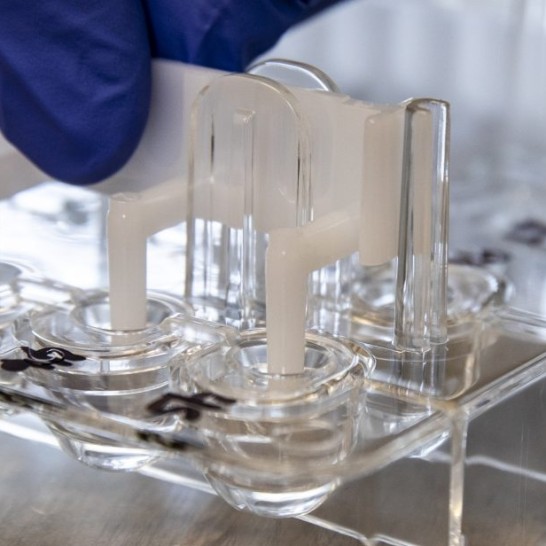
A Win-Win for Providers and Patients
A partnership with UAS enables practices to offer convenient in-house allergy care that improves patient quality of life and satisfaction while generating additional revenue. The practice maintains full clinical control and can easily test, treat and educate patients on environmental and food allergies with comprehensive UAS solutions including practice training, supplies, customer support, patient education tools and marketing materials.
By providing an alternate workstream within the practice, providers can free up their time to attend to other patients who need them while UAS helps take care of the allergy patients.
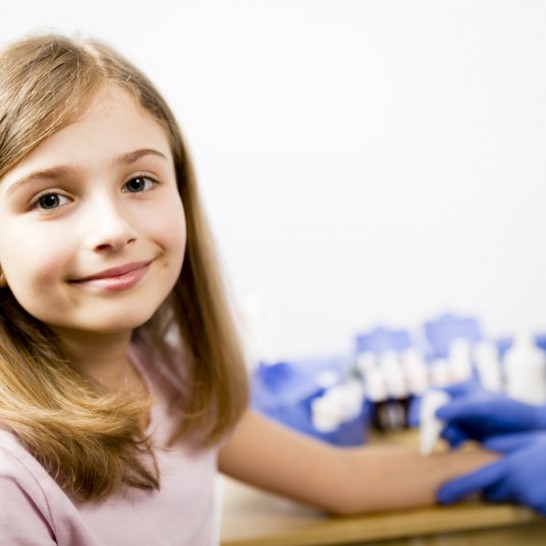
Why Offer Allergy Care Services in Your Medical Practice?
More than 100 million Americans suffer from environmental, seasonal and perennial allergies, including ragweed, pollen, dust mites and animal dander. In addition, roughly 11% of adults and 7½% of children have a food allergy. Unfortunately, only a fraction seek treatment from a specialist, resulting in an annual cost of $18 billion to the healthcare system and businesses in the U.S.1
Most patients self-medicate with over-the-counter medications, but allergy relief can be elusive. The underlying cause of the condition still goes untreated and leaves patients suffering. The numbers are alarming, as 30% of adults and 40% of children struggle with allergies in the U.S.2
At the same time, providers are getting squeezed between wanting more time for quality patient care and the financial demands that ensure sustainable revenue for the practice.
On-Site Allergy Testing and Treatment
United Allergy Services (UAS) helps by partnering with medical practices to deliver in-office allergy testing for environmental and food allergies. While food allergies are usually dealt with by avoiding the allergen, environmental allergies can be successfully treated via immunotherapy.
Adding this service line improves the lives of patients by expanding access to affordable, high-quality allergy care as a seamless part of the practice and delivers an additional revenue stream to drive financial performance.
Why Immunotherapy?
Allergen-specific immunotherapy has been used to treat environmental allergic issues for over a century. It is the only treatment that addresses the immune dysfunction underlying allergic responses rather than simply treating symptoms or suppressing inflammation. It has been proven safe and effective in treating issues such as allergic rhinitis and asthma and can be offered by a primary care provider without needing to send the patient out to a specialist.3
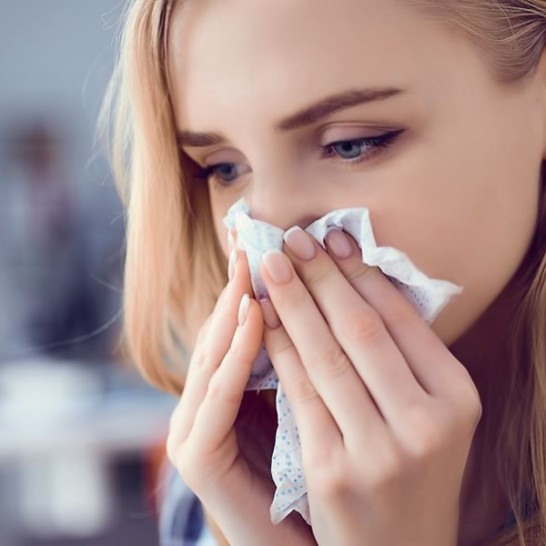
How Partnering with UAS Works
UAS partners with providers to test patients for allergies in the office and then creates a custom formulated immunotherapy from the patient’s allergy test and individual history. Treatments include:
- Customized immunotherapy based on the patient’s history and test results is formulated onsite under provider supervision
- Allergy shots administered in-office or at home by the patient, or
- Allergy Allay Drops® (UAS’s branded sublingual immunotherapy) administered by the patient at home
UAS delivers a range of options for providers, including:
- UAS-Staffed Allergy Center: Fully staffed and integrated UAS allergy services within the practice itself (with all clinical decisions being driven by the provider)
- Self-Managed Kit Package: Provider practice receives online learning modules, supplies and customer support for everything needed to provide allergy testing and treatment solutions, with existing practice staff providing and managing the allergy services
- Flexible Hybrid Package: Staffing-only solutions
- UAS hires and manages the allergy technician for practices that have their own allergy protocols but have a difficult time hiring
- UAS can fully train and support the practice’s employee on UAS protocol and provide the full range of services, systems and support in the UAS-staffed model but with the practice employee operating as the allergy technician
A Win-Win for Patients and Providers
UAS allergy testing and treatment services are proven, flexible, and customizable. They directly meet the allergy health needs of patients without requiring them to go elsewhere, keeping patients – and their dollars – within the provider’s practice.
Click the button below to learn more about working with UAS to add allergy testing and treatment services to your practice.
1 https://www.webmd.com/allergies/allergy-statistics. Accessed 10.31.23.
2 Ibid. Accessed 10.31.23.
3 https://pubmed.ncbi.nlm.nih.gov/27927826/. Accessed 10.31.23.
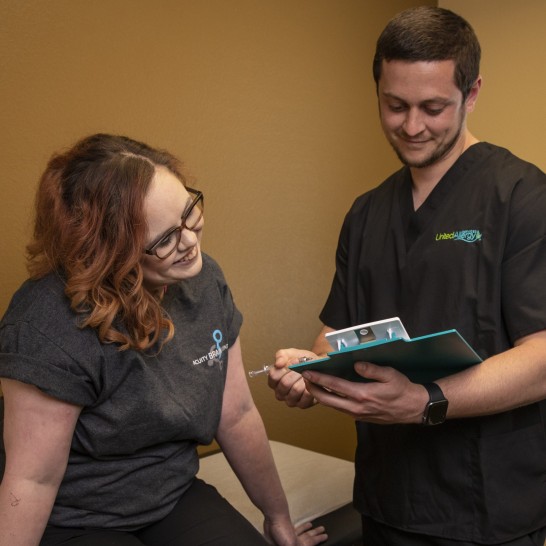
Ancillary Medical Services
In today’s world of declining insurance reimbursements and a multitude of competing options for patients to access care, vibrant, healthy practices are constantly seeking opportunities to grow. Growth can come from expanding your patient base as well as expanding your offerings by offering ancillary medical services to your existing patient base and capturing an increasing share of their healthcare spend.
Growing Your Practice with Ancillary Medical Services
Ancillary medical services can set a practice apart from the competition and enhance its ability to better serve patients. When primary care investment increased, both hospital stays and ED visits decreased, as reported by the Patient-Centered Primary Care Collaborative in 2019.
Allergy assessment and treatment, like that provided by United Allergy Services, is an ancillary service that physicians can offer to both serve patient needs and drive additional revenue into the practice.
Three Steps to Determine Whether Ancillary Medical Services Are Right for Your Practice
Before implementing an additional patient service in a medical practice, take these three steps:
- Consider the current state of the practice
- Qualify the ancillary services vendor
- Determine the cost of investment
1. Reflect on the Practice
The first step is evaluating the practice for untapped potential in both the physical space and services offered. What services are your patients seeking elsewhere either by choice or your referral patterns? These services could be services covered by insurance or they could be consumer-based medical services that your patients are exposed to through other care outlets. The advent of internet-based care outlets has greatly expanded the demand for certain services.
Missed Opportunities
A study published in the Journal of the American Board of Family Medicine (JABFM) noted that physicians are often unable to close the referral loop due to lack of referral completion. In fact, 17% of referred patients do not see the specialist to whom they are referred, according to the JABFM study. Is there a needed service in your community that your practice can fill?
Existing Infrastructure
Available space along with current staff productivity levels and credentials impact the practice’s ability to execute additional patient services. Consider how much time and money it would take for staff education and office renovation before a new service line would be functional in the existing practice.
Patient Evaluation
Alignment with patient needs is critical for the success of any ancillary medical service implementation. Consider the areas of common patient referrals, insurance contracts on file that may influence reimbursement rates, and patient perception of the practice.
17%
of referred patients do not see the specialist to whom they are referred
2. Qualify the Ancillary Medical Services Vendor
Patient care should meet or exceed current practice standards. Ask the vendor:
- What additional patient services do they deliver through implementation and beyond?
- What is their track record?
- What sets them apart from their peers?
Resource Leveraging
A valuable partner will offer provisions that boost the likelihood of success when implementing a new service. Look for available customer support expertise in legal regulations and payer reimbursement for the additional patient services you may onboard. When you meet with a prospective vendor, ask about their expectations regarding qualified candidates for their services and reasonable revenue expectations for the practice.
Vendor Reputation
Partnership with an outside vendor requires a high level of trust. Review the vendor’s references and referrals from colleagues as well as their longevity and experience. Vet potential vendors by researching clinical studies that review the company’s protocols.
3. Determine the Cost of Investment
An expansion of services may require additional resources. Consider the financial investment and the potential ROI opportunity after implementation.
Filling a Gap in the Market
Consider whether adding an ancillary medical service to the practice will be profitable. The most popular ancillary medical services adopted by internal and family medicine are lab services, ECG, prescription dispensing, and radiology/imaging. Adding an ancillary service into a market that is saturated may not be a good business decision. While shopping around for service line vendors, consider what unique market gap you can fill that fits your patient base.
Vendor Buy-In
Choose a vendor with infrastructure to handle not only implementation but staffing and ongoing customer assistance. This backing will help lower upfront costs needed for training and reduce the impact on productivity among existing team members.
What Is Your “Return on Effort“?
Your and your staff’s time is a precious resource. Any investment of time and money should generate a sufficient return to justify the expense. Here are a few questions to answer:
- What is the expected demand for the product or service?
- How will you identify potential patients/consumers?
- What is your investment to initiate the service?
- What is your cost to deliver and maintain the service?
- Is this incremental to your practice, or will this replace or cannibalize some of your existing business?
You do not need an MBA to answer these questions. Your vendor and some common sense can help you answer them. Also, your physician community may have experience with the product or service and can help you develop a simple financial model of the potential revenue and costs.
Does It Work?
Adding a service to a practice should be beneficial for patients and improve ROI for the practice. Adding a service to an existing practice has the potential of improving patient adherence and minimizing the need for referrals overall. 70% of polled physician organization leaders noted that increasing the volume of services delivered is the top action that primary care and specialist physicians could take to increase their compensation.
Take a Look at On-Site Allergy Services
Over 100 million Americans suffer from allergies such as rhinitis (hay fever), food allergies and asthma, but only a fraction seek treatment from an allergist. United Allergy Services (UAS) empowers physicians to offer on-site allergy services that fit seamlessly into existing medical office workflows, expanding delivery of patient services and increasing revenue.
Since 2009, UAS has successfully partnered with more than 2,450 practitioners across 20+ states to deliver proven, flexible and customizable ancillary medical services that directly meet the allergy needs of patients without requiring them to go elsewhere. Treatment protocols include immunotherapy delivered by subcutaneous injections (allergy shots) in the physician’s office or at home as well as sublingual allergy drops self-administered at home by the patient. A UAS treatment group showed >40% improvement in allergy symptom scores compared to control through administration of immunotherapy. A 3-year course of immunotherapy has shown long-term clinical effects and the potential of preventing the development of asthma in children with allergic rhino conjunctivitis up to seven years post-treatment.
UAS medical partners maintain full clinical control and can easily test, treat and educate patients on environmental and food allergies with comprehensive solutions that include staff training, supplies, customer support, patient education tools and marketing materials.
The convenience of in-house allergy care both improves patient quality of life and satisfaction while generating additional revenue for the practice.
Am I Suffering from Allergies? Or Something Else?
There is a wide range of variability from person to person when it comes to allergies. The unique circumstances of each person and their environment as well as what type of symptoms occur, how often they occur, and how troublesome they are all have significant meaning.
Gathering this important clinical information is vital to providers as they are trying to determine if allergies may be playing a role. The ability to identify an association between allergic symptoms and allergen exposures is key and sometimes even definitive in deciding to proceed with allergy testing or immunotherapy.
An easy to use, simple to use, and quick-to-complete symptom screening tool is available in allergy clinics offering United Allergy Service’s line of allergy care options. This screening form offers standardization for this critical initial clinical investigation. It offers the opportunity to focus on seven core symptoms that can be strongly indicative of allergic disease.
The screening tool allows providers to assess the presence of symptoms with a strong indication for allergic disease, the frequency of these symptoms, and the presence of other allergic conditions such as atopic dermatitis and asthma. The greater the symptom score, and the more regular or frequent the symptoms occur, the higher the consideration for an allergy skin test should be. Atopic conditions such as atopic dermatitis and asthma, as well as symptom modifying medication use that has failed to control symptoms, also build more strength in the decision to undergo an allergy test.
This screening tool can also help to capture valuable information even after patients are scheduled for or have already had their allergy test. It can help determine the need for allergy testing and possibly immunotherapy, as well as track the decrease in symptoms and the positive impact immunotherapy has had. Completion of this symptom screening form can also help identify an increase in tolerance to a specific allergen that was previously a trigger, any reduction in medications previously used to lessen allergy symptoms, and any additional clinical benefits noted such as a reduction in asthma exacerbations, sinus infections, ear infections, or dermatitis.
If you feel you may be suffering from allergies, we encourage screening utilizing an allergy symptom screening tool like the one available in UAS allergy clinics or the online allergy quiz available on our website. It’s a great way to start your journey of improving allergy symptoms and your quality of life!
A Deep Dive into Summertime Allergies
As the warmth of summer graces us with its presence, many of us are eager to embrace outdoor activities and soak up the sun. However, along with the barbecues, beach days, and sunny strolls, comes an uninvited guest: allergies. For many people, summer is synonymous with sniffling, sneezing, itchy eyes, and other symptoms that signal the onset of seasonal allergies. Let’s delve into what exactly causes summertime allergies, how they impact us, and what we can do to manage them better.
The Cause: Summer Allergens
Seasonal allergies, also known as hay fever or allergic rhinitis, are triggered by allergens—substances that the immune system mistakenly identifies as harmful. When the body encounters these allergens, it responds by producing a type of antibody called Immunoglobulin E (IgE), leading to an allergic reaction.
During the summer months, the primary culprits are pollens from grasses, weeds, and trees. While spring is most commonly associated with tree pollen allergies, summertime often sees a rise in grass pollens (such as Timothy grass, Kentucky bluegrass, and ryegrass) and weed pollens (like ragweed, sagebrush, and pigweed). Mold spores, which thrive in warm, humid environments, also become more prevalent during summer, contributing to allergic symptoms.
The Impact: Symptoms of Summertime Allergies
The allergic reaction sparked by these allergens can result in a variety of allergy symptoms, many of which can be quite discomforting. These symptoms typically include:
- Sneezing
- Runny or congested nose
- Itchy, watery, or red eyes
- Coughing
- Itchy throat or ears
- Fatigue
These symptoms can severely affect an individual’s quality of life, leading to disturbed sleep, irritability, and an inability to fully enjoy outdoor activities during the summer season.
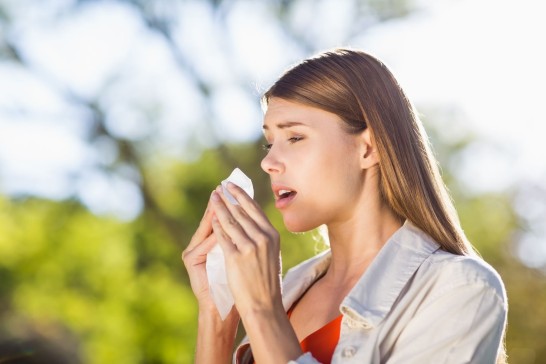
Managing Summertime Allergies
Various strategies can help manage the symptoms of seasonal allergies and make your summer a lot more enjoyable.
1. Awareness and Avoidance
Stay updated on local pollen forecasts available online such as the United Allergy Service Pollen Forecast or through mobile apps such as myAllergyPal®, and try to limit your outdoor activities on high pollen count days. Additionally, during these peak periods, keep your windows closed and use air conditioning to keep allergens at bay.
2. Allergy Medication
Over-the-counter antihistamines can be effective for relieving allergy symptoms like sneezing, itching, runny nose, and watery eyes. Decongestants may also help to relieve a stuffy nose. For those with severe symptoms, a provider may prescribe stronger medications or recommend allergy shots (immunotherapy).
3. Good Hygiene Practices
After spending time outdoors, be sure to shower and change into fresh clothes to remove any pollen that may have settled on your skin and clothing. It’s also beneficial to wash your hands often and avoid touching your face, especially your eyes, to prevent direct introduction of allergens.
4. Home Environment Care
Use high-efficiency particulate air (HEPA) filters in your home to trap pollen and other allergens. Regular cleaning and vacuuming also help to keep your indoor environment allergen-free.
The Solution: Lasting Allergy Relief
Despite best efforts to manage allergy symptoms, over-the-counter medications and preventative measures might not be enough for some individuals. In such cases, it’s crucial to take the next step—getting tested for allergies. By identifying specific triggers, you can not only avoid those allergens but also receive targeted treatment for more effective symptom relief.
Through your provider at an allergy center near you, United Allergy Services offers comprehensive allergy testing that can pinpoint the exact allergens causing your discomfort. This personalized approach allows for a more accurate diagnosis and effective treatment plan.
For some, the path to relief could lie in immunotherapy, a treatment approach that helps the body build tolerance to allergens. United Allergy Services offers allergy shots (subcutaneous immunotherapy) and allergy drops (sublingual immunotherapy) tailored to your specific allergen sensitivities. Over time, immunotherapy can help to reduce or even eliminate your allergic responses, enabling you to fully enjoy summer.
In conclusion, while summertime allergies can put a damper on this vibrant season, there are many avenues to manage and overcome them, including avoidance, medication, and medical treatments like immunotherapy. Don’t let allergies hold you back—explore options with your provider at a local allergy center to find the best treatment path for you.
FSA/HSA Plans for Allergy Services
Environmental allergies are a common ailment that affects approximately 50 million Americans every year. Whether you suffer from year round or just seasonal allergies, you may be able to use your tax-free FSA/HSA funds to help you save money on education, testing, and treatments. If you struggle with allergy symptoms—itchy eyes, congestion, and non-stop sneezing—you know how tough the spring and summer months can be. Over-the-counter drugs can help, but sometimes these remedies aren’t enough. As you compare options, you may notice the hefty price tag. Luckily, your health savings account (HSA) or flexible spending account (FSA) may offer some savings to your allergy relief.
What Exactly is an FSA or HSA Health Care Plan?
Flexible Spending Accounts (FSA) or Health Savings Accounts (HSA) are medical savings accounts with tax benefits, designed to allow you to set aside pre-tax savings to go towards your treatments, healthcare and other medical expenses.
Can I Use My FSA/HSA Plan for Allergy Testing?
For the majority of healthcare plans environmental and food allergy testing is an eligible FSA/HSA expenditure, meaning they allow the tests as a qualified medical expense. To make sure you're covered, we recommend getting in touch with your provider to confirm your inclusions.
A qualified medical expense is defined in IRS Publication 502 as the cost of treatment, cure, diagnosis, mitigation or prevention of a disease. The expense must be used principally to prevent or help ease the symptoms of a physical/mental illness or disability in order to meet the criteria for HSA and FSA. Environmental sensitivity tests work to identify allergic triggers that may cause discomfort and allow you to avoid or mitigate the exposure. Similarly, food sensitivity tests identify digestive issues so you can alter your diet to try and prevent things like bloating, nausea and stomach cramps.
Other Allergy Related Questions?
Our team wants to help you make the most out of your benefits before they expire on January 1st. Visit our FAQ page for more insight, or find an Allergy Center near you by clicking here.
Allergies, Asthma, and Air Quality
As we move into the summer months, it is important to understand the connection between allergies, asthma, and air quality. While air pollution does not directly cause allergy or asthma, it can increase the risk of developing atopic disease. Air pollution can also trigger allergy or asthma symptoms or an asthma attack for persons with existing conditions. Air pollution usually increases during summer months. This pollution leads to an increase in related symptoms, urgent office visits, and emergency room visits.
Air Quality Components
Allergy and asthma symptoms can be triggered by two key air pollutants, ozone (found in smog) and particle pollution (found in haze, smoke, and dust).
- Ozone, a gas, is one of the most common air pollutants, contributes to smog, and is more common in cities where there are a lot of cars. In the summer months ozone can increase when intense sunlight and heat convert a mixture of tailpipe and power plant emissions with other chemicals resulting in unhealthy air. Allergy and asthma symptoms may trigger more easily because ozone is irritating to the lungs and can reduce lung function.
- Particle pollution is present and stable throughout the year but is typically worse near busy roads, during rush hour and around factories. It is also high when there is smoke in the air from wood stoves, fireplaces, or burning vegetation. These small particles can irritate the nose, throat, and especially the lungs, and also reduce lung function and cause asthma exacerbations.
Air Quality Reports
The United States Environmental Protection Agency (EPA) reports air pollution levels using the Air Quality Index (AQI). AQI reports the level of ozone and other air pollutants. When the AQI is 101 or higher, it is dangerous for people with allergies and especially asthma. Sometimes asthmatics can experience increased symptoms even when ozone levels are moderate (AQI 51-100). Many local news stations and weather forecasters report local air quality to advise the public about moderate or high pollution days.
Another resource, The American Lung Association has just released their annual State of the Air report. One interesting finding in the report is, “The addition of 2020 data to the 2022 “State of the Air” report gives a first look at air quality trends during the COVID-19 pandemic. Regardless of the shutdowns in early 2020, there was no obvious improvement.”
Combatting Air Quality Conditions
When air quality may be dangerous to people with allergies or especially asthma, they are deemed as “Action Days”. During Action Days, people with asthma should limit their time outdoors, especially in the afternoon or rush hour periods, stay in a well-ventilated, preferably air-conditioned, building, and most of all, do not intensely exercise outdoors. Also try to keep windows closed in your home and car, and instead utilize the air conditioning on the recycled setting.
There is also a risk that you could have poor indoor air quality within your home. Irritants can exacerbate allergy and asthma symptoms. These and allergy and asthma triggers are common items such as:
- household cleaners
- hair products
- perfumes
- air freshening sprays or plug ins
- scented candles/diffusers
- smoke produced from
- tobacco
- fireplaces
- candles
- cooking
- wood burning stoves
Not smoking or permitting smoking in the home is one of the easiest ways to protect the home from indoor air pollution. Finally, be mindful of high humidity and mold growth. These two factors can greatly impact indoor air quality. Installing exhaust fans in kitchens, bathrooms, and laundry rooms can help lower humidity. The use of a dehumidifier helps significantly as well.
Amanda Hofmann, MPAS, PA-C, is a graduate of Duquesne University, in Pittsburgh, PA. After spending 8 years in clinical practice, she joined United Allergy Services where she is currently the Vice President of Clinical. Amanda is also the past president of the Association of PAs in Allergy, Asthma, and Immunology.
United Allergy Services is also on Facebook, LinkedIn, or Twitter. See other interesting and related articles on the UAS Blog.
Earth Day and Climate Change Effects
Earth Day is this Friday, April 22nd. Earth Day is truly a mainstay in American culture, created by Past-President Richard Nixon. This year the Earth Day theme is “Invest in Our Planet”. We are called upon to have “unstoppable courage to preserve and protect our health, our families, our livelihoods…” One of the continued focal points of interest is trying to put a dent in rising global temperatures, with an average increase of 2.4 degrees Fahrenheit in the last 50 years. It doesn’t sound like a lot, but each degree brings bigger changes than many realize. The rising temperatures have a directly negative impact on allergy sufferers and those offering optimal allergy care to their patients.
Effects on the Planet
Warming temperatures results in longer growing seasons. Although people tend to enjoy nature’s natural beauty a bit longer, and farmers have additional time to harvest crops, the increase in temperatures prolong and worsen the suffering of those with pollen allergies and can cause an imbalance in the optimal growth range for crops and cause foods shortages.
Different plants require different conditions to grow, and when the climate continually changes, so do the arrangements and floristic zones of the world’s plants. As the planet warms, we continue to see the planting zones where these plants grow will continue shifting north. Shifting planting zones threaten things like accurate allergy testing panels, cocoa beans for chocolate producers, coffee beans, and maple syrup. Plant species, being entirely mobile beings, will be forced to move upslope or downslope, or species with arrange themselves in new combinations entirely. Finally, the rising temperatures also negatively impact plants by impacting the pollinators that assist with their growth. Warmer temperatures and changing climates have negative effects on pollinator species like butterflies and honeybees. This further shift growing and blooming seasons and further weakens the plant populations.
Allergy Amplification
As the planet warms, allergy season tends to begin earlier and last longer each year. Talk to your primary care provider about allergy testing and treatment options if you notice that your allergies are worsening. You may be a great candidate for immunotherapy, a solution to change the source of your allergy misery rather than treating just the symptoms.
Amanda Hofmann, MPAS, PA-C, is a graduate of Duquesne University, in Pittsburgh, PA. After spending 8 years in clinical practice, she joined United Allergy Services where she is currently the Vice President of Clinical. Amanda is also the past president of the Association of PAs in Allergy, Asthma, and Immunology.
United Allergy Services is also on Facebook, LinkedIn, or Twitter. See other interesting and related articles on the UAS Blog.
Easter and Passover Allergy Concerns
The Easter and Passover holidays are here! Holidays mean family centered fun, festive meals, and usually sweet treats to enjoy. For allergy suffers, however, holidays like Easter and Passover can be challenging to navigate with traditional holiday foods containing hidden allergies, and the high tree pollen counts over most of the country by this time. Aside from the usual pollen and food allergies, brightly dyed eggs, household pets, and sweet baby chicks and bunnies can also wreak havoc on the nose and chest. Here are some tips to navigate the upcoming holidays and ensure that you and your family have a safe and happy holiday.
Traditional holiday meals are at the cornerstone of Easter and Passover. Plan the meals out in advance and be mindful of any guests that may have a food allergy. Be flexible and try to switch ingredients for allergy-friendly alternatives, eliminate a recipe from the menu altogether, or take care to prepare allergy-friendly dishes separately from the other meals. If you are not sure whether guests have a food allergy, consider printing recipes out for each of the dishes and allow people to determine if it’s a safe food for them to indulge in. Also consider avoiding a buffet style offering, or separating allergen safe foods from allergen containing foods in two different areas or tables.
These spring holidays typically mean chocolate and sweet treats to younger members of the family, or those young at heart. Try to again consider those guest and family members that may have allergies to things like chocolate, so they are not left sitting on the sidelines. Allergy to chocolate itself, or the cacao bean, is incredibly rare, however more commonly the offenders are milk, peanuts, tree nuts, soy, and corn. A little research will provide an array of options of dairy free or peanut/tree nut free brands of treats. Always check labels to see if the offending food in contained in the ingredients list, or mentions it was produced in a facility that also processes other allergen containing foods putting your loved one at risk of cross contamination. Keep in mind most chocolate does contain soy in the form of soy lecithin to keep it solid at room temperature, and white chocolate commonly contains corn in the form of corn syrup. If the treats offered are of the homemade variety, it can be even more challenging for a food allergy sufferer due to lack of label to research ingredients. If you suffer from food allergies, a good rule to follow if “If you can’t read it, don’t eat it”. Plan to bring some of your own safe snack or goodies, unless you can make sure your host prepared foods allergen free, safely away from other allergen containing food, and on a separate and thoroughly cleaned surface. In lieu of store bought or homemade edible treats, consider offering nonfood items for younger guests such as books, sporting goods, stickers, novelty items, or toys.
Although most food allergens are most offensive if ingested, it is important to consider that some people do have reactions or develop irritations from contact exposure to egg or the dyes used to make them bold and bright. If colorful dyed egg hunts are part of your spring holiday tradition, there are alternative ways to include everyone on the fun. Instead of coloring eggs with traditional eggs and traditional dye, consider eggs made of wood, ceramic, or plastic, and consider natural dye alternatives. Other options include making gelatin eggs, egg sugar cookies for decorating, or decorating marshmallows in place of eggs. Also, consider replacing the hard-boiled egg on the Passover Seder plate with a ceramic or plastic egg to keep guest anxiety free.
If the above-mentioned allergies are life threatening for you or a loved one, always make sure to carry a minimum of two epinephrine auto injectors if it is prescribed. Make sure the epinephrine autoinjector is carried in a way it can be accessed and administered within 60 seconds of a need arising. If you or a loved one does have life threatening allergies, it is always a good idea to check with your health insurance and ensure you know where to seek medical care should the need arise if celebrating the Spring holidays out of town.
Food allergens typically are the easiest to keep front of mind during the Easter and Passover holidays, however equally as difficult for allergy suffers and arguably more difficult to avoid are the tree pollens and mold spores blowing in the air. These unwanted guests can ruin any picnic or outdoor gathering with nasal, sinus, eye, and chest symptoms. If there is both indoor and outdoor venues at the celebration location, try to minimize the time spent outdoors. If you are hosting the celebration, try to offer an indoor haven if planning to spend time outdoors, as well as keep windows and doors closed at the indoor space. Also, minimize the exposure to outdoor allergens while traveling to the destination by keeping windows up in the car and instead using the air conditioning.
It is a good habit to always check pollen counts for the area where you will be celebrating, and if planning the celebration try to plan for it to start mid-day or later due to peak pollen times typically occurring in the first half of the day (specifically 5am 10am). Also, it would be beneficial to plan the event outside of heavily grassy areas or those densely populated with trees. This may help to decrease the concentration of allergens in the air. If the celebration will be entirely outdoors with no indoor refuge, it is a good idea to make sure you are on top of your allergy medication or immunotherapy regimen before going, and make

sure to pack a few changes of clothing as well as wet wipes for the ability to remove pollen from your immediate environment every few hours. Once you return home from the festivities, plan to shower or bathe before prioritizing any other activities. It is especially important to bathe before crawling into bed, to remove any allergens that have adhered themselves to your skin or hair. This is especially important before allowing them to have access to your pillow or sheets and being in the immediate space and air you breath in all night.
Many people choose to show their appreciation to their host or show their love to their family by bringing beautiful spring flowers or plants to the Easter or Passover celebration. Unfortunately, people can have severe symptoms such as sneezing, along with nose and eye itching and watering related to the pollen, or just the smell of particular flowers. Even an asthma attack can be triggered from them. According to the American College of Allergy, Asthma and Immunology, there are many flowers you can get at a florist that produce little pollen. Look for tulips, roses, begonia, columbine, crocus, daffodil, and geraniums if you want to be safe.
We cannot forget about the cherished furry family members that may be in attendance for the spring holiday celebration, as well as the propensity to give the give of baby chicks or bunnies this time of year. Dander, saliva, sweat, and urine from adorable dogs, cats, and even bunnies can trigger an allergic response in some people. If possible, try to keep pets confirmed to only a certain area of the celebration so that those that wish to enjoy them can, while those that are unable can find refuge elsewhere. Make sure to thoroughly wash your hands before returning to an animal free area of the celebration, before partaking in shared food items, or before touching your face, mouth, or eyes. Also, make sure the recipient of a new spring pet is not triggered by them. Although recent literature has shown us a true allergy to bird feathers is rare, there are substantial amounts of dust mites found in feathers that can trigger unwanted allergy symptoms.
If you or a loved are unsure whether tree pollen, grass pollen, mold spores, dust mites, or animal dander are potential allergy triggers and the cause of the nasal congestion, runny nose, post nasal drip, sneezing, and itchy watery eyes you have been suffering with, seeing your provider for an allergy test may provide the clarity they are looking for! Some providers may have the ability to access food concerns as well! And if you are already aware of true allergy triggers, but the spring allergy medication and avoidance measures are just not cutting it, there is still time to see your provider and discuss starting allergen immunotherapy.
Amanda Hofmann, MPAS, PA-C, is a graduate of Duquesne University, in Pittsburgh, PA. After spending 8 years in clinical practice, she joined United Allergy Services where she is currently the Vice President of Clinical. Amanda is also the past president of the Association of PAs in Allergy, Asthma, and Immunology.
United Allergy Services is also on Facebook, LinkedIn, or Twitter. See other interesting and related articles on the UAS Blog.
St. Patrick's Day, Green Beer, and Wheat Allergy
St. Patrick's Day is fast approaching! Are you wondering if your wheat allergy will get in the way?
History of the Holiday
In Ireland, the holiday was created as a way to honor the country's patron saint and a time to cut loose during the Catholic Lent season. Today, the holiday is honored in myriad of ways around the world to celebrate all things Irish. From preparing classic Irish food to setting leprechaun traps, young and old alike look for the luck o'the Irish on March 17. Many adults may even enjoy a clover green colored beer as they celebrate. While I assumed this was a modern tradition, during my research I discovered that green beer is over a century old!
According to IrishCentral, an Irish American New York City coroner named Dr. Thomas Hayes Curtin gets credit for this discovery. He unveiled his invention of a beer the color of shamrocks at a Bronx social club in 1914. The doctor used “wash blue” in a light ale to liven up the celebration. Unlucky for his family, friends, and colleagues, however, the “wash blue” was also, in fact, poison. This substance is an iron powder solution used to whiten clothes. Thankfully, more than a century later, green beer prevails, and this Irish American’s invention continues. Now a few drops of green food coloring give the beer that glorious emerald hue instead of wash blue.
Wheat Allergy and Beer
I recently was asked whether those with a wheat allergy could partake in the green beer tradition. According to the AAAAI, there are a variety of reasons someone may experience a reaction while consuming beer:
The most frequent causes of reactions to beer are either IgE-mediated reactions to barley/hops or a reaction to the alcohol itself. This alcohol reaction is quite often due to acetaldehyde dehydrogenase 2 deficiency. Acetaldehyde dehydrogenase 2 is the enzyme that metabolizes the first metabolic product of alcohol digestion, acetaldehyde. When acetaldehyde accumulates, it produces mast cell degranulation, and therefore its symptoms mimic an allergic response. Although not as prevalent, there can be reactions to rye, wheat, yeast, or molds. In addition, some beers may contain additives such as sulphites, sodium benzoate, or tartrazine that can cause sensitivities. Some craft beers also contain, fruit and nut extracts or dairy. Any of these ingredients can cause discomfort or reactions in someone with a food allergy or sensitivity to one of them.
If someone has a wheat allergy specifically however, there are several wheat free beers available. You can find a great list allergy-insight.com with additional insight to ingredients such as oats, brown rice, corn, or sweet potatoes. You may consider hosting a St. Patrick’s Day party at your home, purchasing a wheat free pale beer, and adding as much green food coloring as you wish. If out and about for the holiday, make sure to talk with the brew master about your selection. Better yet, order a beer in a bottle to view the ingredient list yourself!
Amanda Hofmann, MPAS, PA-C, is a graduate of Duquesne University, in Pittsburgh, PA. After spending 8 years in clinical practice, she joined United Allergy Services where she is currently the Vice President of Clinical. Amanda is also the past president of the Association of PAs in Allergy, Asthma, and Immunology.
United Allergy Services is also on Facebook, LinkedIn, or Twitter. See other interesting and related articles on the UAS Blog.
Football, Food, and Fall Allergies
Fall has arrived and so have shorter days, cooler weather, and football season! Unfortunately for some, football, food and fall allergies go hand in hand. This is especially true in the southern and western regions of the US where some weed allergens peak in the fall. The idea of sneezing and wheezing with itchy, watery eyes while watching a game or practice can be dreadful. Perhaps more concerning is visiting major sports venues if you or a loved one have food allergies.
Outdoor Allergies
It is common to check the weather forecast to plan for warm or cool temperatures when attending sporting events. . A good habit may be to also check the local pollen counts in the area. Keep in mind that peak pollen times are typically in the first half of the day (specifically 5am 10am). Attending practices or games midday, in the afternoon, or in the evening may help to reduce exposures.
Avoidance for Fall Allergies
If you have a future MVP of your own, packing some wet wipes could be helpful. Wiping down their hands, face and neck can combat those distracting allergy symptoms when out on the field. Also, verify any allergy medication they take will not make them drowsy during their practice or game. Non-sedating medication options or allergen immunotherapy may be worth discussing with their provider.
After practices or games, changing out of the clothing worn while participating or spectating can help alleviate allergy symptoms. Also helpful is an immediate shower, particularly before crawling into bed. Showering will help to wash away any allergens that have adhered themselves to your skin or hair. This is especially important to keep them out of the immediate space and air you breath in all night.
Food Allergies
If food allergies are a concern, planning ahead can alleviate a lot of anxiety and allow for a smooth trip. Always make sure to carry a minimum of two epinephrine auto injectors if one is prescribed to you or a loved one. Make sure the epinephrine autoinjector is carried in a way it can be accessed and administered within 60 seconds of a need arising. The Food Allergy Research and Education (FARE) organization recommends “to reach out directly to the venue to learn more about their efforts” in regard to additional steps they may be taking to ensure your family’s safety at the game.
Food Allergy Tips
Some suggested topics to cover when you contact the venues are:
- Availability of allergy friendly games, sections, or suites
- Is power washing utilized for seating, and traffic pathways at the stadium?
- Are ingredient lists available upon request at the concessions?
- Policy for bringing in safe meals and snacks
- Locations for emergency responders
Planning and communication make it possible to avoid fall allergies and enjoy football season. Communicate with family, friends, coaches, players, and venues, and create a plan that is right for your family. However, missing out on football season does not have to be part of that plan. If you or your loved ones are not quite sure if allergies are playing a roll, or if the allergy medication is just is not cutting it, consider contacting your provider and discussing allergy testing and starting allergen immunotherapy.
_________________________________________________________________________________________________________________________________________________________________________________________________________________________________
Amanda Hofmann, MPAS, PA-C, is a graduate of Duquesne University, in Pittsburgh, PA. After spending 8 years in clinical practice, she joined United Allergy Services where she is currently the Vice President of Clinical. Amanda is also the past president of the Association of PAs in Allergy, Asthma, and Immunology.
United Allergy Services is also on Facebook, LinkedIn, or Twitter. See other interesting and related articles on the UAS Blog.
Ragweed and Fall Pollen Allergies
Back to school season is here! Shorter days, crisp, cool evenings, and beautiful fall foliage are on the horizon. This time also marks the onset of weed pollination and the resurgence of allergy symptoms that may have taken a vacation in the hot, dry July heat. The meteorological calendar says fall begins September 22nd, but weed pollen, the main culprit of the sniffles and sneezes during fall allergy season, is already here!
Pollen Offenders
Towards the close of summer, weeds start to pollinate. Weeds grow all summer, but their pollen is usually not released until later in the growing season. This can vary year to year but typically starts mid to late August. Ragweed, cocklebur, lamb’s quarters, pigweed, dock sorrel, English plantain, and sagebrush can all cause fall allergy symptoms and are widely spread across the U.S.
Specifically ragweed pollen is the predominate culprit of allergy symptoms from August through October, peaking on average in mid-September. Ragweed is one of the major drivers of allergy symptoms and releases huge amounts of pollen each and every day. The pollen produced by ragweed is small and light. It is released in large quantities into the air and carried for miles by the wind. Nasal congestion, runny nose, and itchy eyes are typically caused by wind-blown pollen which is easily spread for miles and miles.
Other Pollen Types
Goldenrod, which blooms at the same time that ragweed does, is instead insect-pollinated and therefore is not a significant allergen for most individuals. Insect carried pollen is produced by plants that have bright and attractive flowers. This kind of pollen is typically large and heavy, sticks to insects, and is transported during flight fertilizing other plants. These bright flowers are commonly thought to be allergy offenders, however because they do not release much pollen into the air they are not as likely the culprit of allergy symptoms.
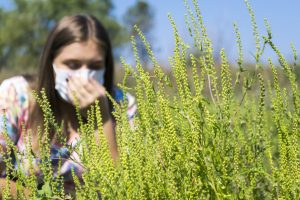
Manage Symptoms
Checking local pollen counts is helpful to anticipate the level of exposure on any given day. Pollen counts are determined by collecting pollen on special rods. The pollen is then counted under a microscope and calculated in grains per cubic meter of air. Pollen counts tend to be the highest early in the day, or often when the wind picks up just before a large rainstorm. If you like dancing in the fall rain, or jumping in rain puddles, however, you are in luck. During a rainstorm and immediately following, pollen becomes still and dormant because the rain makes it damp and heavy. As the air becomes warmer and drier following the storm, however, the pollen count will rise again.
Pollen Avoidance
Those with weed pollen allergies should try to avoid heavily dense wooded areas or those with brush and shrubbery. These areas should be especially avoided in late August when pollen is the most dense and abundant. Pollen counts are never zero, nor will an allergy sufferer truly be able to avoid weed pollen in the late summer and early fall. However, contact may be lessened by taking simple steps to avoid pollen overload:
- Utilizing the air conditioner or heater
- Keeping the windows and doors at home and in the car closed
- Utilizing the dryer rather than the fresh breeze to dry clothing
- Changing clothes after coming in from being outdoors
- Shower prior to getting into bed or laying on upholstered furniture
These easy steps will help to decrease pollen exposures. Also, one benefit COVID-19 may bring allergy sufferers, is that wearing of some masks will help to minimize the amount of pollen reaching the nasal passages if being worn in outdoor settings.
Get Tested
If someone is unsure whether weed pollen is a trigger for their back-to-school nasal congestion, runny nose, post nasal drip, sneezing, and itchy watery eyes, taking an allergy quiz or seeing their provider for an allergy test may provide the clarity they are looking for!
Amanda Hofmann, MPAS, PA-C, is a graduate of Duquesne University, in Pittsburgh, PA. After spending 8 years in clinical practice, she joined United Allergy Services where she is currently the Vice President of Clinical. Amanda is also the past president of the Association of PAs in Allergy, Asthma, and Immunology.
United Allergy Services is also on Facebook, LinkedIn, or Twitter. See other interesting and related articles on the UAS Blog.
Back to School Action Plan for Allergies and Asthma
As the final days of summer break come to a close, families everywhere are preparing for children to return to school. Whether this is the first year a child is heading to school or the last, it is an exciting time for both children and parents. It can, however, also be a time of anxiety for a parent worried about a child’s asthma or allergy conditions. Below are some ways to prepare and communicate these concerns, and back to school excitement.
Make a Plan
Schedule an appointment with your child’s healthcare provider in the weeks leading up to the first day of school. During this appointment, discuss overall heath as well as specifics regarding allergies, food allergies, or asthma. This is also a great opportunity to request that the healthcare provider refill any asthma or allergy medications. The provider can complete medication permission forms required by the school nurse during your visit. It is important the school nurse can quickly and easily confirm the medication you provide is:
- non-expired
- prescribed for your child
- has clear directions on when, how, and how much to take
This is also the time to request your provider complete any additional forms required by the school. Examples are asthma action plans, anaphylaxis action plans, and food allergy alert plans with avoidance and substitution information. If your child is in their first year or is entering a new school, it is important to contact the school nurse directly. Also, if your child has complex requirements or action plans, you should visit with the school nurse yearly about their daily requirements. The nurse can discuss accommodation options available for children at the school. Other important policies to discuss include asthma inhalers, epinephrine auto injectors, classroom parties, field trips, and cafeteria rules.
Classroom Action

The classroom can be a source of exposure for children with allergies to dust mites, mold, and animal dander. Communicate with your child’s teacher about allergy triggers for their symptoms and what common symptoms to look out for. Don’t forget to ask if the classroom will have a resident pet. If so, what type of animal and any requirements that the pet come home with your child may be important. It is also important to understand if the school has air conditioning or if windows are typically opened on nicer days. If windows must be opened, then you can prepare your child accordingly with additional symptom control medication.
During your initial meeting with the teacher, you can begin setting appropriate expectations. Discuss things such as asthma action plans and any potential limitations for recess or physical education. Also, anaphylaxis action plans for food or stinging insects and any food avoidance requirements should be covered. You will feel confident knowing both the school nurse and teacher are fully informed of your child’s needs. The school nurse and teacher should have a consistent plan for where inhalers and epinephrine auto injectors are stored. Also confirm that there is a plan for administration of medication in a time of need. It is a good idea to ask about substitutes or classroom aides/parent volunteers confirm they are made aware of your child’s needs.
When to Stay Home
During a regular year it is often a challenge to decide when it is or is not appropriate to send a child to school with cold-like symptoms. That can be even more complex for a parent if your child has allergies or asthma. In this unique time when COVID-19 is still a major focus, another layer of complexity is added.
For children with asthma, it is safe to attend school with mild wheezing that occurs infrequently and is quickly resolving with the use of albuterol. However, it is appropriate to keep your child home from school if:
- they experience difficulty sleeping due to respiratory symptoms
- require albuterol every 4 hours to relieve them of things like wheezing, shortness of breath, or chest tightness
- have respiratory symptoms that are failing to resolve with albuterol use
Make sure to always inform the school nurse and the child’s teacher of any recent asthma exacerbations and how it was treated. Communicate any continued treatment if applicable.
If your child has an allergic reaction, make sure to inform the nurse. Also update the nurse on the allergen trigger if known, how the reaction was treated, and any ongoing treatment.
Wishing all the children a safe, healthy, and prosperous new school year!
_________________________________________________________________________________________________________________________________________________________________________________________________________________________________
Amanda Hofmann, MPAS, PA-C, is a graduate of Duquesne University, in Pittsburgh, PA. After spending 8 years in clinical practice, she joined United Allergy Services where she is currently the Vice President of Clinical. Amanda is also the past president of the Association of PAs in Allergy, Asthma, and Immunology.
United Allergy Services is also on Facebook, LinkedIn, or Twitter. See other interesting and related articles on the UAS Blog.
Summer Allergy Travel Tips
School is out, summer is in full swing, and it is prime time for summer vacations and traveling. Summer travel with environmental allergies, asthma, or food allergies may make planning a vacation seem like a daunting task. Not to worry! We can show how to keep summer allergy issues at bay during your staycation, beach trip or wine tour of your dreams.
Summer can be an ideal time to travel. The hot summer months can actually provide relief to some, like those with tree pollen allergies. Unfortunately for others, summer comes with its own allergy triggers. While tree pollen counts tend to be lower, the summer heat pushes grass and mold pollen to be higher. Ragweed begins to appear in the late summer and early fall months to kick off fall allergies. Pollen is not the only trigger you can expect; more stinging insects and hotter temperatures in summer months can complicate matters for asthma sufferers.
Summer Allergy Location Tips

Location is everything! One consideration is that pollen counts tend to be lower on the coast, so beaches may be a good option. The desert, or alternatively snowy mountain tops, can also be ideal for pollen, although maybe not for summer travel. Does your vacation involve hiking or mountain climbing? Dust mites do not prefer elevations above 2,500 feet, so that may be a great choice as well. Wherever you decide to go check the allergen forecasts for that area. You should also check current pollen counts each day there. If high pollen counts are in the forecast, consider planning inside activities during your trip.
Checking pollen counts may not be the only forecast to make sure to monitor. As the temperatures rise, you can expect the humidity to rise as well. Many who suffer from asthma can find their condition aggravated by the high temperatures and humid climate. When planning your time outside during the summer, check the air quality for low humidity and low ozone days. You can also avoid triggers by planning around the heat of the day when possible.
Packing for Vacation
Although your favorite swimsuit may be more fun, allergy control measures should equally be at the highest priority. Staying compliant to your recommended treatment protocol in the days before you leave is crucial. These measures will support well-maintained symptoms while traveling, and for the duration of the trip.
- Make sure to pack allergy medication and immunotherapy in a carry-on bag if traveling by plane.
- Try to keep medications in original packaging and pack all medication and allergen immunotherapy in a separate, clear bag.
- Any liquid or gel medications or immunotherapy will need to individually be 3-4 ounces or smaller. Consider purchasing travel sizes if standard sizes do not meet this requirement.
- Pack 1-2 days of additional medication or immunotherapy than what will be needed in case of delay when traveling.
- It may be beneficial to set a reoccurring alarm on a phone before leaving. Normal routines may change with travel and vacation plans.
- Finally, are you traveling out of the country? If you are traveling to a non-English speaking location, bring a list of your allergies in the native language. You may also learn to say or write “I’m allergic to _____.” in the local language.
Additionally, do not forget to pack any hypoallergenic hygiene products that you regularly use. Examples might be sunscreen, after sun cream, lotions, ointments, body wash, or laundry detergent. When searching for accommodations, remember that more and more hotels offer items like mattress and pillow covers or hypoallergenic linens so you may not have to pack your own. It may also be helpful to ask about smoke free rooms, away from humid, mold friendly pool areas if possible. If pet dander is a concern, take note of whether the location is “pet friendly”.
Summer Allergy Avoidance Tips
Air in enclosed spaces such as planes and trains can sometimes be extremely dry. Consider investing in nasal saline spray or washes, as well as portable humidifier. A humidifier will likely also be beneficial if staying in a hotel for more than a night or two. Staying well hydrated with water and non-caffeinated beverages will also greatly help you combat drying out. If traveling by car, considering utilizing the heat or air conditioning and keeping windows closed. Also, turning on the heat or air 10 minutes before departure can help clear vents of any residual allergen particles.
While enjoying your destination, remember that peak pollen times are typically early in the day (specifically 5am 10am). Scheduling desired outdoor activities for later in the day or just before dusk may help to reduce exposures. Similarly to when you are home, a daily shower is helpful for allergen avoidance. Showering before bed will help to wash away allergens that have adhered themselves to your skin or hair. This is especially important to maintain so that your pillow, sheets, and the immediate space you breathe in all night is allergen free.
Insect Allergies
Another aspect of the summer allergy concerns may be insects. If stinging insect allergies are present planning ahead can alleviate a lot of anxiety and allow for a smooth trip. Always make sure to carry a minimum of two epinephrine auto injectors if it has been prescribed to you or a loved one. Make sure the epinephrine autoinjector is carried in a way it can be accessed and administered within 60 seconds of a need arising.
If you or a loved one does have life threatening allergies, it is a good idea to check with your health insurance and ensure you know where to seek medical care should the need arise while you are out of town. You may also consider carrying an allergy identification card. It can be helpful to keep a card in your wallet listing your allergies, and also emergency contact information and your healthcare provider information. This can be especially important for children who may be summer camps or staying overnight with friends or family.
Food Allergies
If food allergies are present, packing your own meals or snacks may make traveling easier. Preparing food yourself is always the safest option. Alternatively, research the local dining hot spots you wish to visit in advance of leaving for your trip. This allows you to identify safe selections from the menu or you can call to request proper menu accommodations. You may still consider packing your own snacks if you have food allergies. While it may be possible to plan meals around food allergies, snacks often present more of a challenge. Pack allergy friendly snacks, especially if lengthy plane rides are involved.
Amanda Hofmann, MPAS, PA-C, is a graduate of Duquesne University, in Pittsburgh, PA. After spending 8 years in clinical practice, she joined United Allergy Services where she is currently the Vice President of Clinical. Amanda is also the past president of the Association of PAs in Allergy, Asthma, and Immunology.
United Allergy Services is also on Facebook, LinkedIn, or Twitter. See other interesting and related articles on the UAS Blog.
Tips for Balancing Baseball and Allergies
Spring means longer days, warmer weather, and the beginnings of baseball! Unfortunately for some allergy sufferers, the start of the long-anticipated baseball season also means the time of year when allergens such as tree pollen are at an all-time high. Sneezing, wheezing, and itchy, watery eyes can make games or practice challenging for you or your little leaguer. Even more concerning? The thought of major league games and contact with baseball’s favorite sidekick...peanuts! You can still enjoy this spring and baseball season with a little planning for your allergies.
Eliminating all outdoor sports and activities may seem like the best decision, and for many, it is. However, if skipping out on baseball or other outdoor sports due to allergies just is not an option, we can help. Here are some tips that will help allergy suffers enjoy watching America’s pastime and PLAY BALL!
Airborne Allergy Tips
Check the weather forecast before heading to the game. When checking out the weather, it is good practice to also check the pollen counts in the area. Keep in mind that peak pollen times are typically in the first half of the day, specifically 5am 10am. Attending practices or games midday or in the afternoon may help to reduce exposures.
Baseball and outdoor allergies don't have to be in competition with one another. If you have a little leaguer, packing wet wipes is good practice. Wiping down their hands, face and neck can be helpful to combat those distracting allergy symptoms when out on the diamond. Also, make sure your favorite player is not relying on allergy medication that could make them drowsy. There are non-sedating medication options, or allergen immunotherapy that are worth discussing with their provider.
After a long practice or game, it is beneficial to change your clothing as soon as possible. Also helpful is an immediate shower, especially before crawling into bed. The shower will help to wash away any allergens that have adhered themselves to your skin or hair. This is especially important so that the allergens aren't transferred to your pillow or sheets, remaining in the immediate space you breathe in all night.
Planning for Stinging Insects and Food Allergies
If your allergies include stinging insects or even food, planning ahead can alleviate a lot of anxiety. Always make sure to carry a minimum of two epinephrine auto injectors if there is a known insect or food allergy. Make sure the epinephrine auto injectors can be accessed and administered within 60 seconds if the need arises.
If food allergies are present, especially peanut, legume, or tree nut, it can make the lyrics “Buy me some peanuts and Cracker Jacks” send shivers down your spine. Fortunately, most large baseball stadiums across the country have become aware of the dangers and distress surrounding food allergies and have started to offer peanut-free games or special accommodations for food allergy families with peanut-free designated seating. The Food Allergy Research and Education (FARE) organization typically releases an annual guide outlining which major league and minor league baseball stadiums offer peanut aware sporting events. Along with utilizing their helpful guide, FARE recommends “to reach out directly to the venue to learn more about their efforts”.
Some suggested questions to have ready when you contact the venue about are:
- Are there any [peanut] allergy friendly games, sections, or suites available?
- Does the venue utilize power washing for seating, and traffic pathways at the stadium?
- Can you find ingredient lists or are they available upon request at the concessions?
- Do they allow families to bring in their own safe meals and snacks?
- Are emergency responders available to the public at every game, and are their sections closer to these personnel?
Planning and communication are key to enjoying baseball season and balancing your outdoor allergies. Talk to family, friends, coaches, players, and venues, to create a plan that is right for your family. However, missing out on baseball season does not have to be part of that plan. If you or your loved ones are not quite sure if allergies are playing a role, or if the over-the-counter allergy medication just is not cutting it, you have options. There is still time to see your provider and discuss allergy testing and begin allergen immunotherapy.
About the Author
Amanda Hofmann, MPAS, PA-C, is a graduate of Duquesne University, in Pittsburgh, PA. After spending 8 years in clinical practice, she joined United Allergy Services where she is currently the Vice President of Clinical. Amanda is also the past president of the Association of PAs in Allergy, Asthma, and immunology.
United Allergy Services is also on Facebook, LinkedIn, or Twitter. See other interesting and related articles on the UAS Blog.
Valentine's Day Allergy Offenders
Valentine's Day can be intimidating for allergy suffers. Far too frequently sweethearts visit the emergency room instead of their favorite restaurant or fill the day with sneezes instead of smooches. Avoiding the most common Valentine’s Day allergy offenders is possible, and here are some tips to keep everyone safe.
The Nose Knows
Flowers on Valentine's Day is a classic way to show your love. Unfortunately, flower pollen can trigger severe symptoms such as sneezing, itchy nose, and itchy/watery eyes or even asthma attacks. Luckily for the lovers out there, according to the American College of Allergy, Asthma and Immunology, there are many flowers options that produce little pollen and still set the mood. Look for tulips, roses, begonia, columbine, crocus, daffodil and geraniums for your allergy suffering sweetheart.
Before we check the box for being safe in the scent department, consider other smell related concerns. It’s important to know physical symptoms such as headaches and sneezing can be triggered from just the smell of some flowers. Often, these symptoms can also be related to perfume or cologne as well. Although these reactions are not actually a true allergy, and instead are generally a reaction to odors created by volatile organic compounds, they can cause a Valentine's Day disaster.
Food Allergy Offenders
Also on the list of iconic Valentine’s Day allergy offenders is that delectable box of chocolates. Allergy to chocolate is rare, but most chocolate is made with milk, and many of the chocolate assortments contain tree nuts, peanuts, eggs, and other more common food allergens. Read all food labels to stay safe and be sure to take note of label warnings such as, “May contain” or “Processed in a facility”. If these warnings pertain to you, your Valentine’s Day may be sweeter without it.
If you or your Valentine have any food allergies, of course, be sure to carry your epinephrine autoinjector at all times. It’s always the most important accessory you can have! Here’s another helpful hint if food allergies are on the table; Protect your Valentine by calling ahead to that romantic restaurant to discuss the food allergy before you go. Make sure the kitchen and chef can be accommodating on a busy night like Valentine’s Day. Better yet, you might get extra points in the Cupid category if you roll up your sleeves and prepare all your Valentine’s favorites yourself. Added bonus? You won’t have to worry about finding the perfect facemask to match your outfit this year!
Gifts That Don't Keep Giving
If your Valentine has their heart set on jewelry, keep in mind that it can contain varying amounts of nickel. A contact allergy to nickel can lead to symptoms such as severe itching, blisters, and rash in the area where the jewelry touches the skin. Unlike allergy to flowers and foods, a reaction to a metal may take several days to develop after exposure. If baubles and jewels are the burning desire of your Valentine, however, don’t worry! Sticking to jewelry made with stainless steel, copper, platinum and 24 karat gold is usually a safe choice.
Finally, consider skipping the stuffed animals this year. The bigger the teddy bear, unfortunately, can mean the bigger the dust mite population that it ends up harboring. These mites are one of the most common causes of allergies and can be found in any fabric item. Much like pollen, they can bring on sneezing and other nasal symptoms, and even result in asthma flareups. Keep the temptation for the plush gifts away and make your Valentine your main squeeze instead!
See more news and insights from United Allergy Services on Facebook, LinkedIn, or Twitter.



